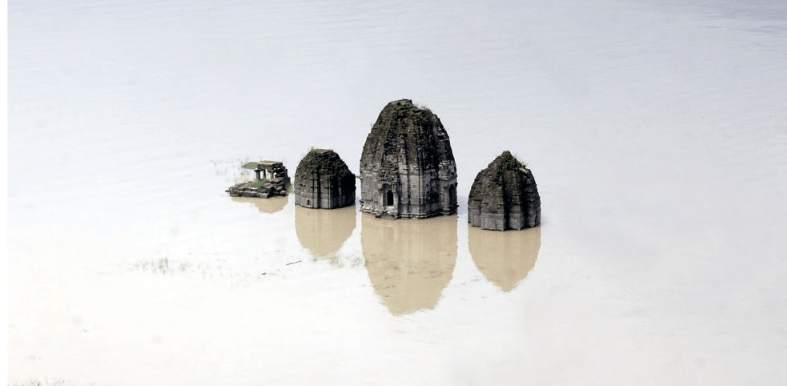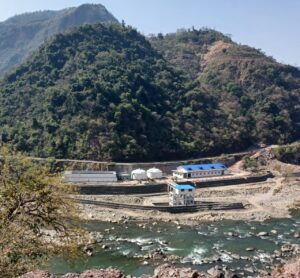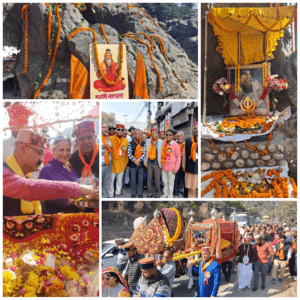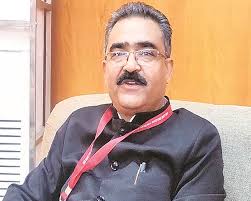Bhakra Dam level 50 feet below normal, submerged temples in Gobind Sagar emerge 4 months early

- Ex-minister Bikram Thakur calls Himachal industry tour to Germany ‘wasteful expenditure’, says public issues being ‘ignored’ - November 15, 2024
- Why is Himachal government exempting science, math teachers from non-teaching duties - November 15, 2024
- Himachal CM goes shopping at International Lavi Fair-2024, see what all he buys for Rs 8,900 - November 15, 2024
Himachal Pradesh is facing a significant water shortage, with rainfall 18 per cent below normal this year. The water level in Bhakra Dam and Gobind Sagar Lake — typically full during the monsoon — has dropped drastically, being 50 feet below the usual levels.
The reduction is so severe that temples, typically submerged until February, have already resurfaced in early October. One temple remains partially visible, having not fully submerged this season, marking an unprecedented situation.
Water levels falling rapidly
Every year, following the monsoon, the water level of Bhakra Dam stabilises at around 1,550 feet. However, this year the level currently sits at 1,620 feet, with predictions it could drop to 1,500 feet. This unusual decline is also being observed at other dams across Himachal Pradesh. Historical temples in Bilaspur’s Gobind Sagar Lake, which would normally stay submerged until February, have emerged four months earlier than expected. In previous years, the water levels typically rose in October and remained stable until January.
Also Read:https://thenewzradar.com/press-club-of-india-slams-himachal-govt-for-fir-against-journalist-asks-cm-sukhu-to-revoke-it/
Now, half of these temples have resurfaced at the beginning of October. According to Suresh, a local boat operator, the lake was already filled to 30 feet less than usual, and the water levels have been decreasing further, dropping by about 10 feet in October alone. The primary cause behind this worrying trend is the insufficient rainfall this year.
Impact on North Indian states
The reduced water levels pose a significant risk to farmers in North Indian states like Punjab, Haryana, Delhi, and Rajasthan, who rely on Bhakra Dam for irrigation. These states will now only receive the minimum amount of water needed to meet their demands. Any wasteful use could lead to a water crisis in the upcoming summer season.
Bhakra-Beas Management Board issues warning
The Bhakra-Beas Management Board (BBMB) has already issued warnings during its monthly meetings with the concerned states. Both Bhakra and Pong dams supply irrigation water to North Indian states, and the shortfall will disproportionately affect farmers. They have been urged to conserve water to prevent further shortages.
Despite the dwindling water levels, BBMB officials assure that power generation will remain unaffected in the short term. According to the management, water will be released only in quantities necessary to meet the demand of other states. This controlled release aims to preserve enough water for sustained power generation throughout the year.




